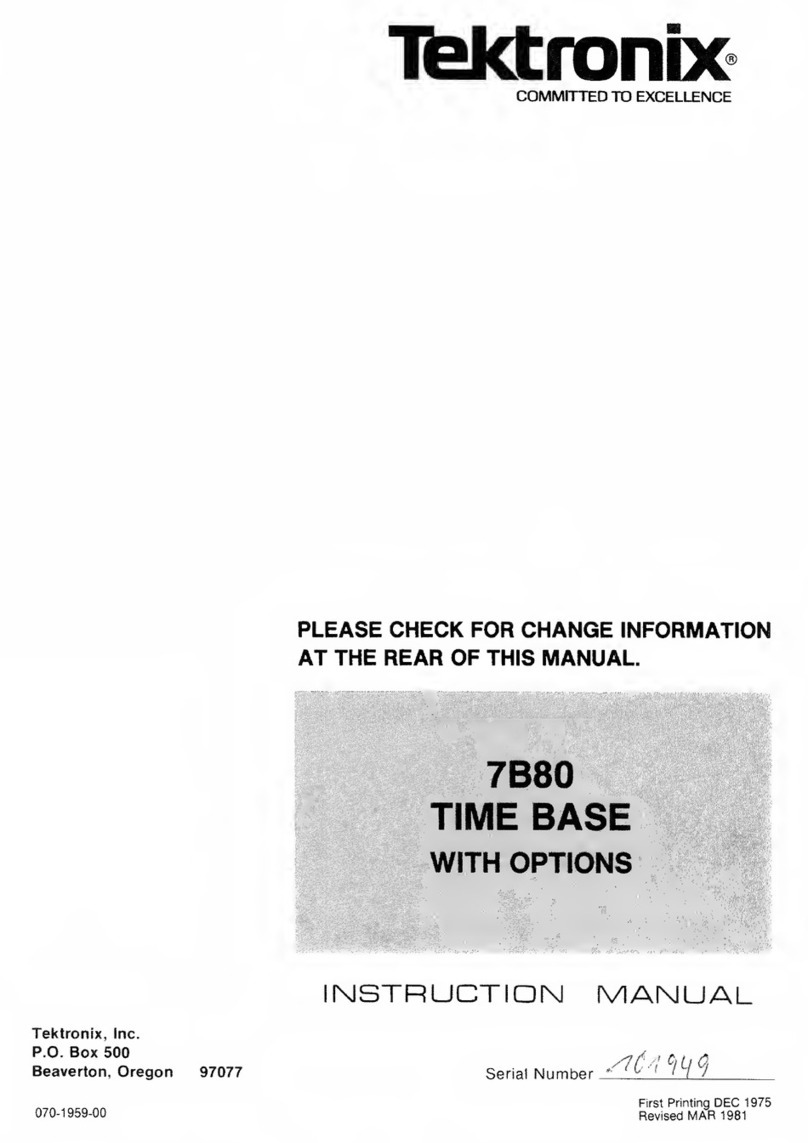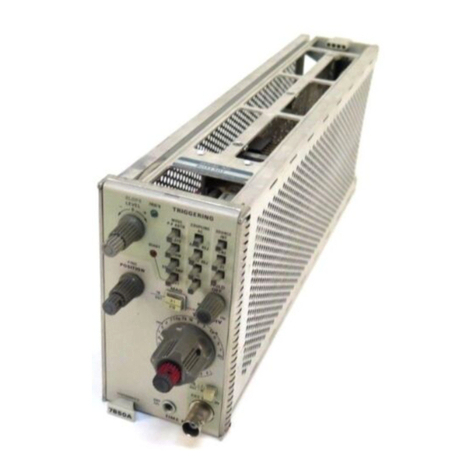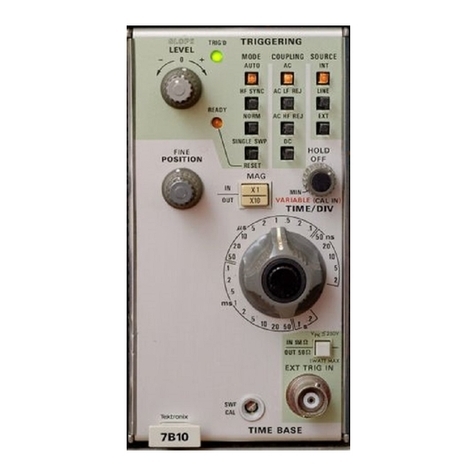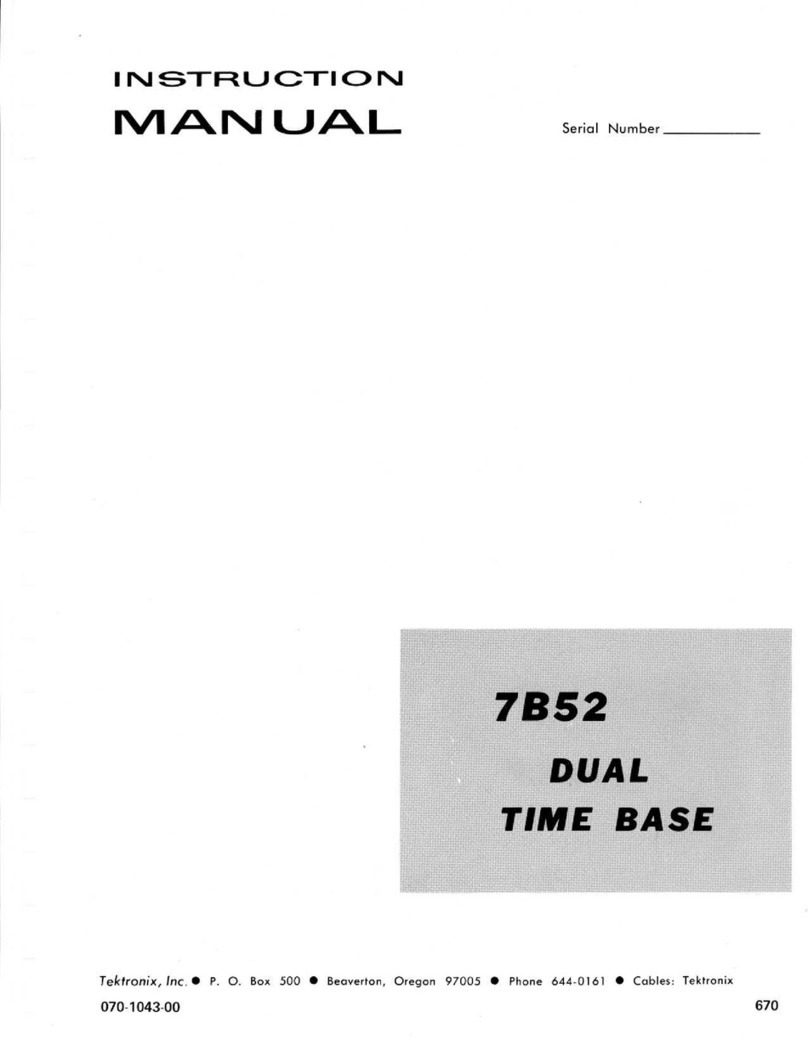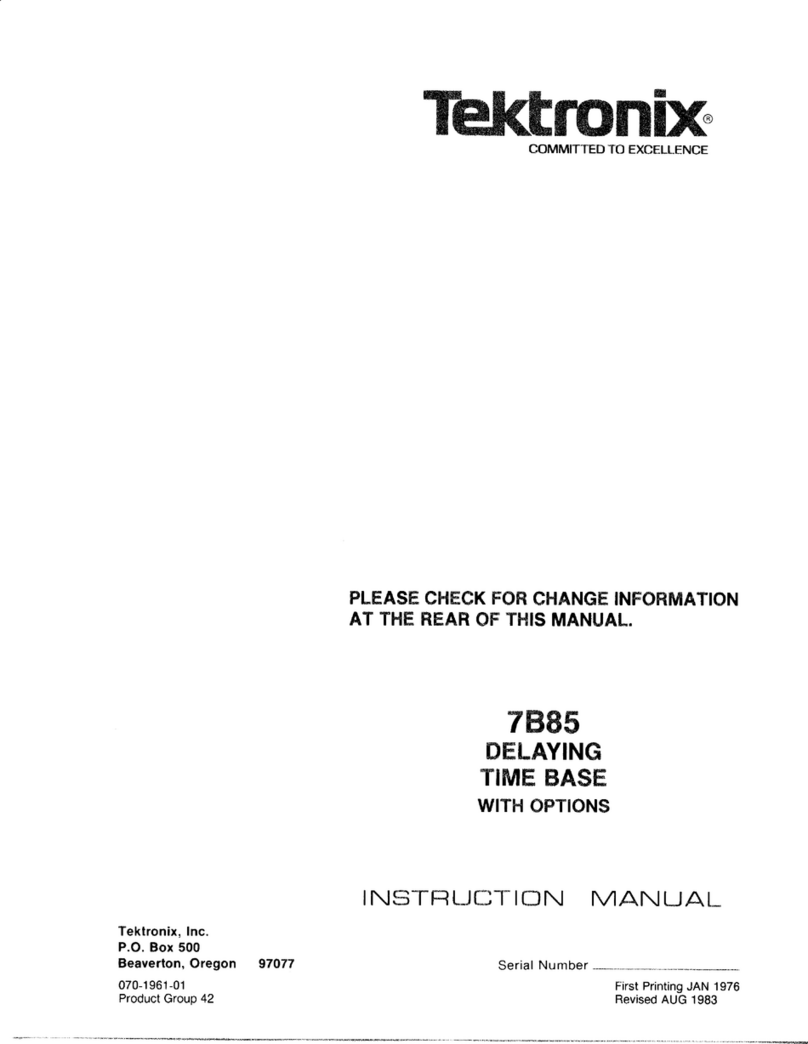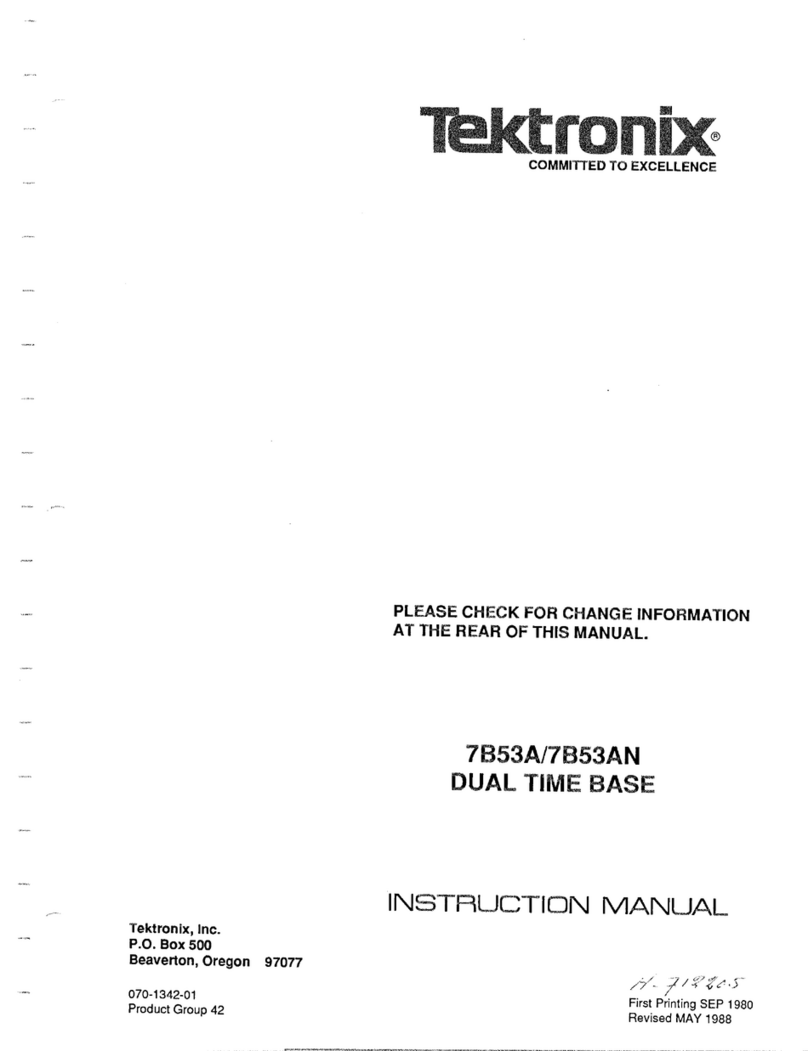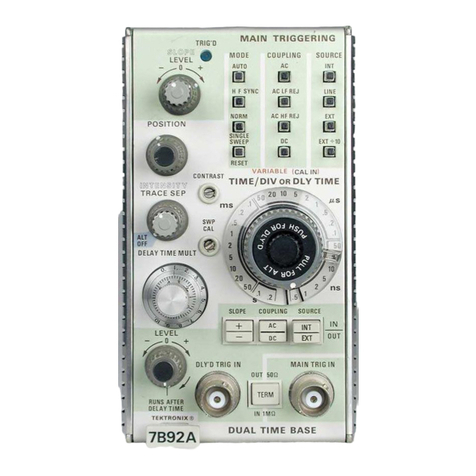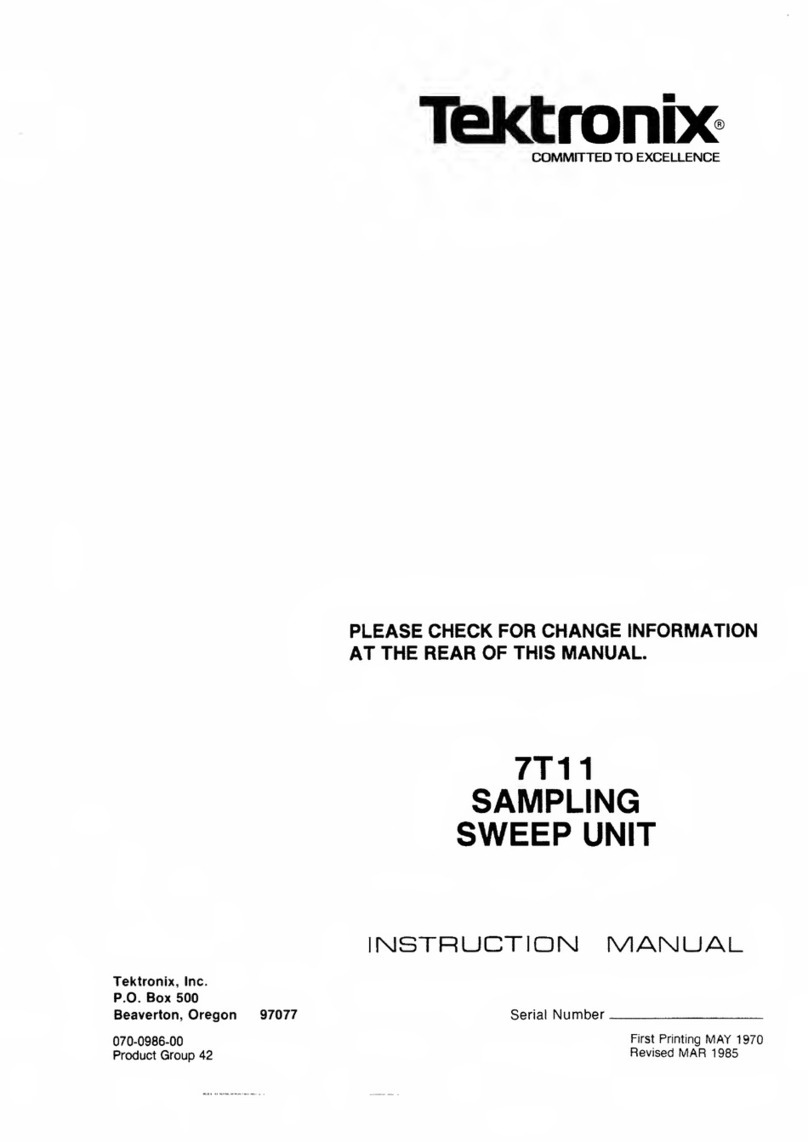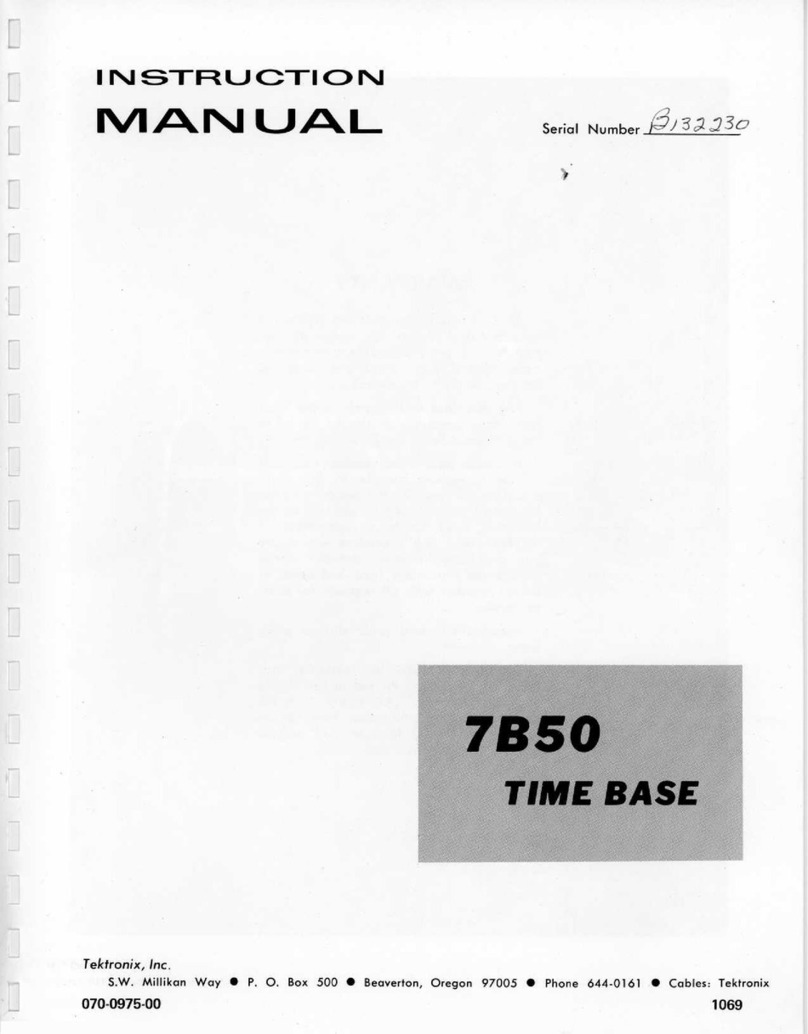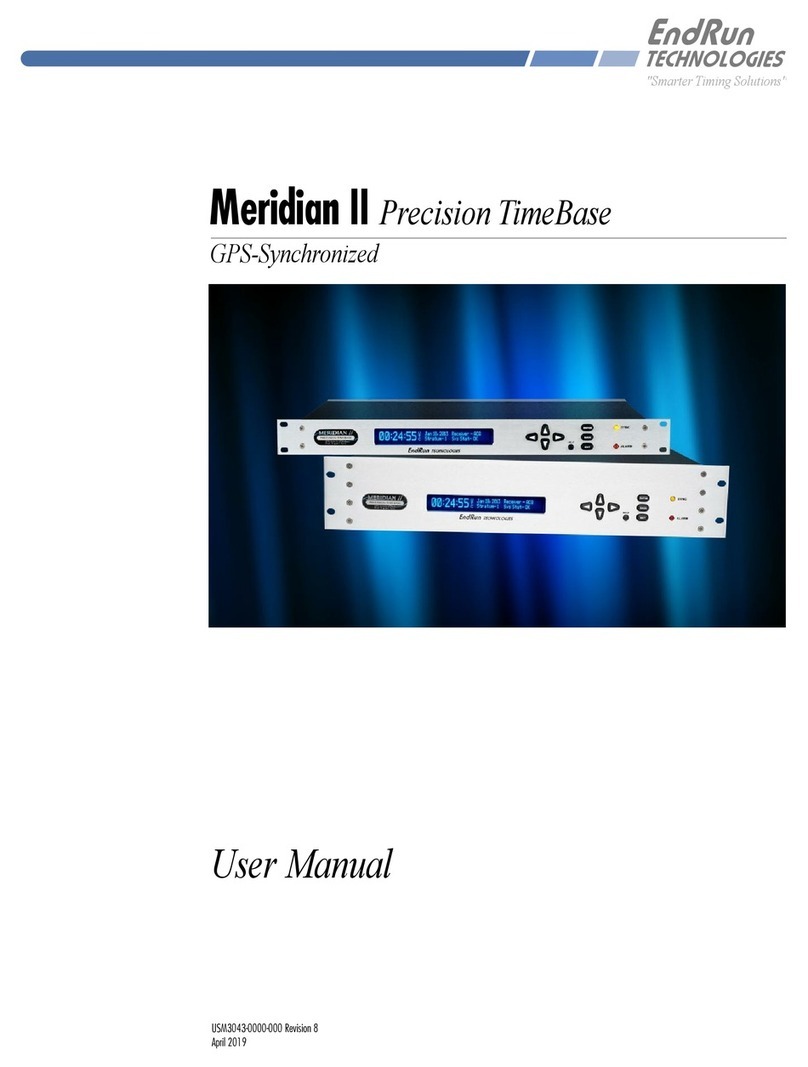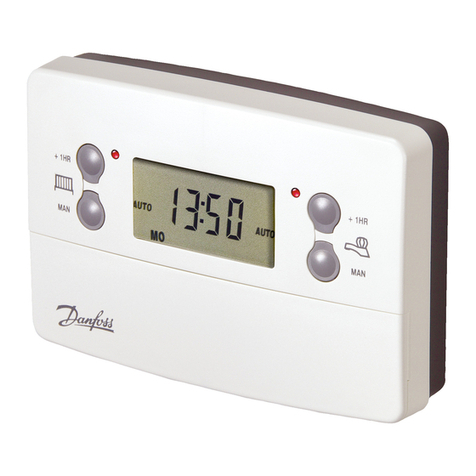
LIST
OF
ILLUSTRATIONS
............
,..
iii
SAFETY
SUMMARY
.
. .
..................................
.
v
Page
SECTION
1
OPERATING
INSTRUCTIONS
INTRODUCTION
..........................
......
. .
.
. .
.
. .
1-1
INSTALLATION
........................ .
.
......
....
....
1-1
FRONT-PANEL
CONTROLS,
CONNECTORS,
AND
INDICATORS
.....
1-2
Main
Triggering
Controls
......................,.....,,,
,
1-2
Sweep
Controls
.
. .
.
..............................,,,.
,
1-4
Delayed
Triggering
Controls
..........................,,
1-5
Front-Panel
I
nputs
..........................,,.,,,,,,
, ,
1-5
FUNCTIONAL
CHECK
.............................,..
.
.
. .
1-5
Setup
Procedure
.........................
....
,
1-6
Sweep
Functions
.........................
,
1-6
Triggering
Functions
......................
......
...
..,
,
1-7
GENERAL
OPERATING
INFORMATION
..........
. .
.
...
. .
...
. .
1-8
Main
Triggering
.........................
...
.
. .
.
.....
. .
1-8
Main
Trigger
Modes
.....................
.
.
.
. .
......
,,.,
1-8
Main
Trigger
Coupling
..............,...
.
.
.
,.,.
,
1-9
Main
Trigger
Source
...................
...
.
,
...
1-10
Input
Impedance
......................
...
....
....
.
. ,
1-10
Trigger
Slope
.......................
...
.......
. .
.....
1-10
Trigger
Level
.......................
...
......
....
.....
1-10
Selecting
Sweep
Rates
................
. .
............,,,.
1-12
TimeMeasurement
..................
.
.
.,.
...
1-12
Display
Modes
.................
. .
.
.
..................
1-12
Delay
Time
Multiplier
.........
. .
.
...
........,.
1-13
Delayed
Sweep
Triggering
.
....
.....
.
.
...........,,,,,.,,
1-13
SECTION
2
SPECIFICATION
........
...
...........,..
, .
.
2-1
WARNING
THE
FOLLOWING
SERVICING
INSTRUCTIONS
AREFOR
USE
BY
QUALIFIED
PER-
SONNEL
ONLY
.
T
O
AVOID
PERSONAL
INJURY,
DO
NOT
PERFORM
ANY
SERVICING
OTHER
THAN
THAT
CONTAINED
IN
OPERATING
INSTRUCTIONS
UNLESS
YOUARE
QUALIFIED
TO
DOSO
.
SECTION
3
THEORY
OF
OPERATION
Block
Diagram
Description
................
.......,..,,,,.
. .
3-1
Detailed
Circuit
Description
..............
................
, ,
3-1
Main
Trigger
Generator
...............
...............
,,,
3-1
Delaying
Sweep
Generator
.............
.......
. .
.....
....
3-3
Delayed
Trigger
Generator
.............
.......
. .
.,,,,
.,.
3-4
Delayed
Sweep
Generator
............
........
, .
,,,,.
.,,,
3-6
Horizontal
Logic
.................
.
.
.....
.
. .
. .
.....
...,
3-6
Output
Amplifier
................
. .
.
....
.
.
....
....
.....
3-7
Readout
.
.
.
. .
.........................
..............
3-7
